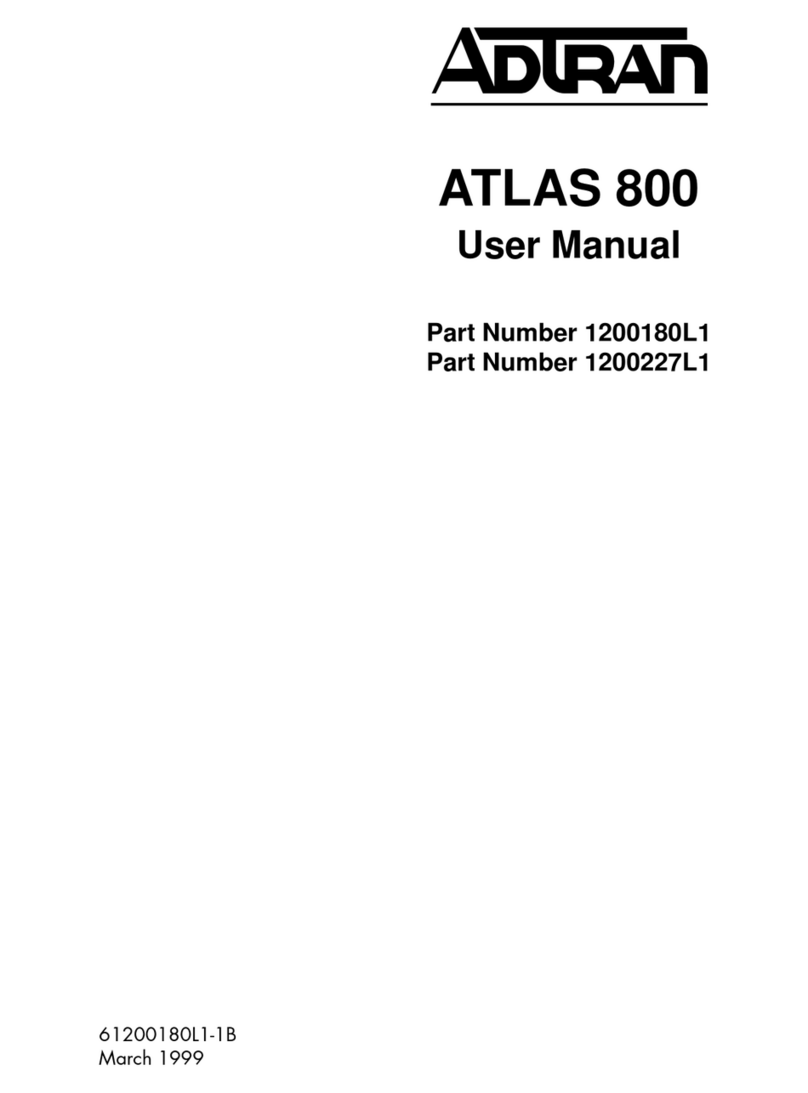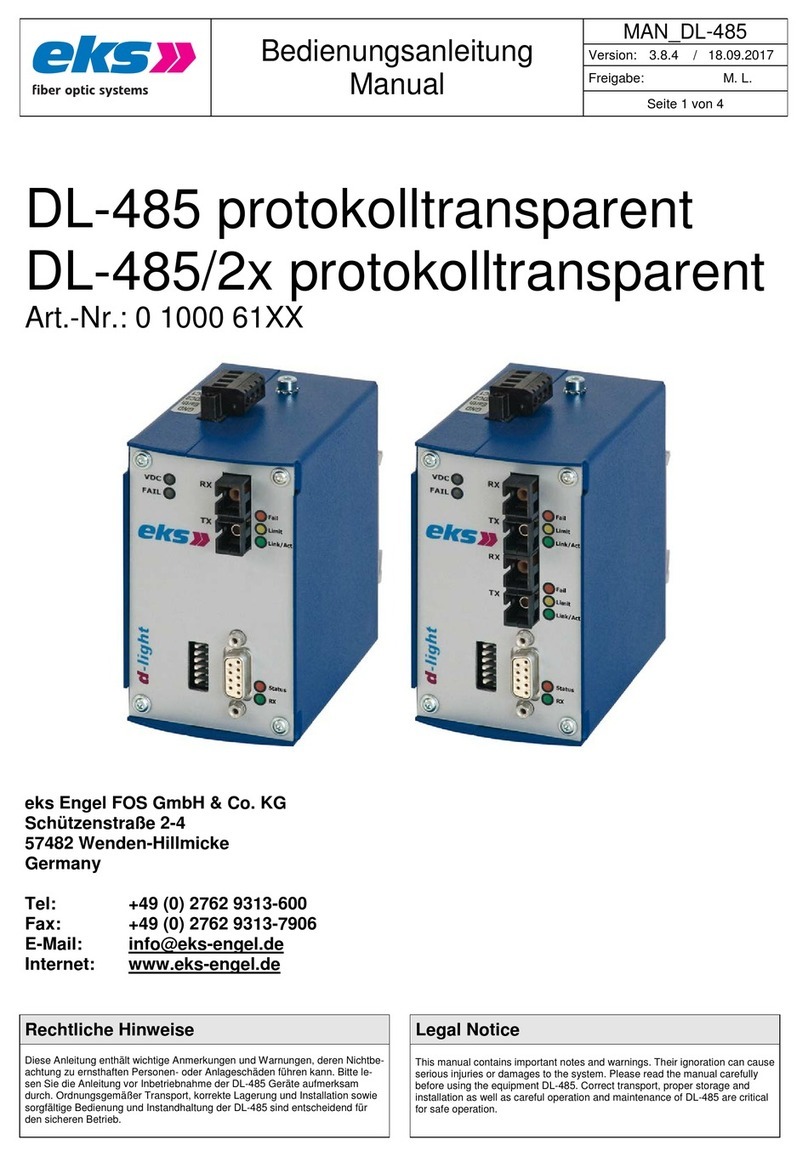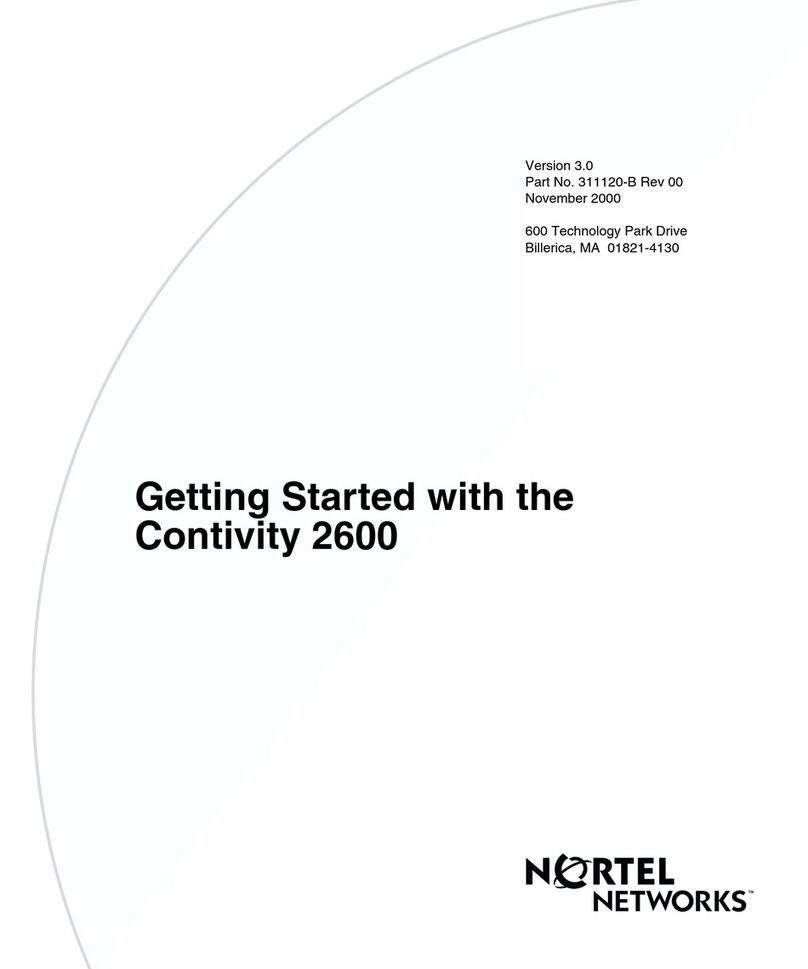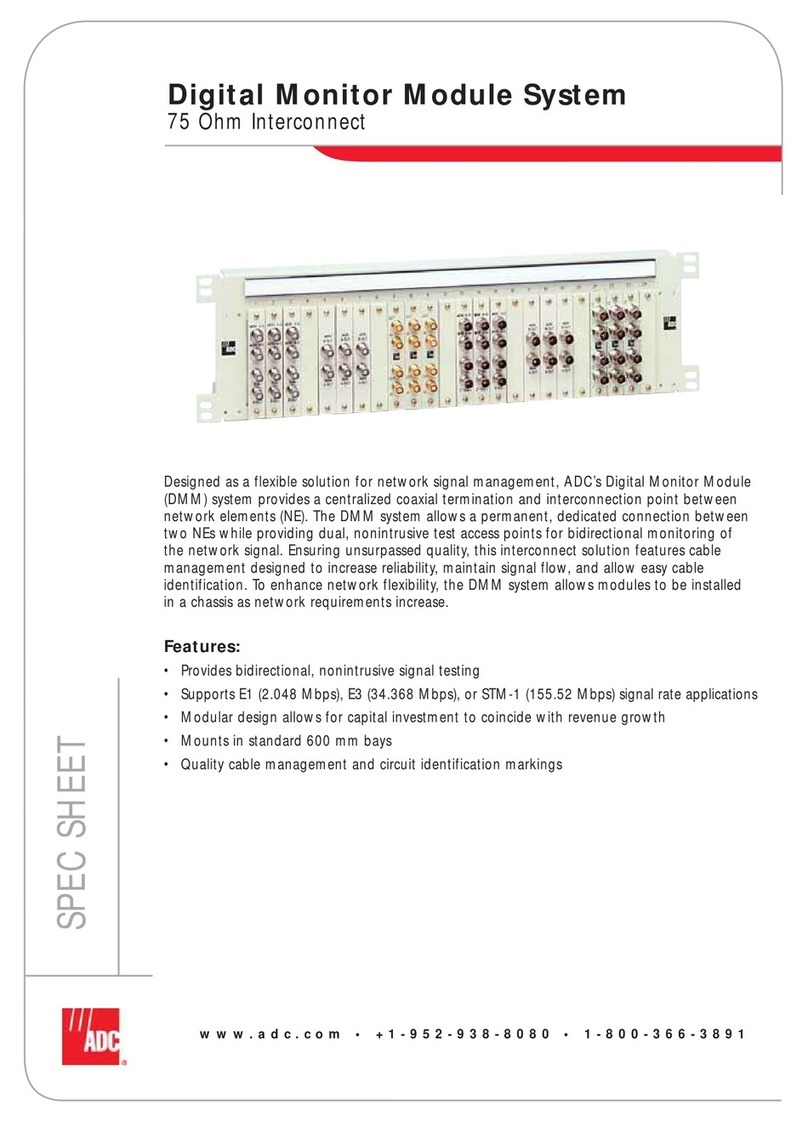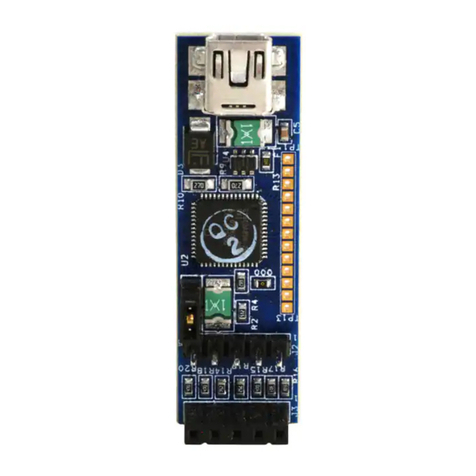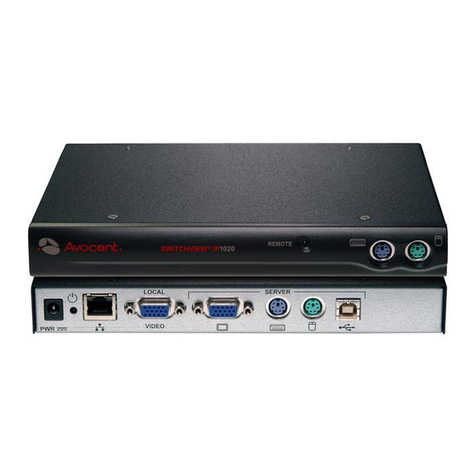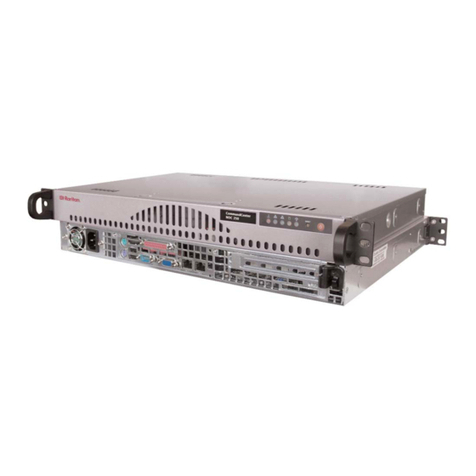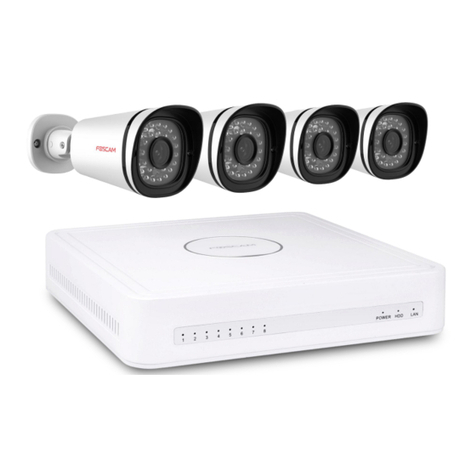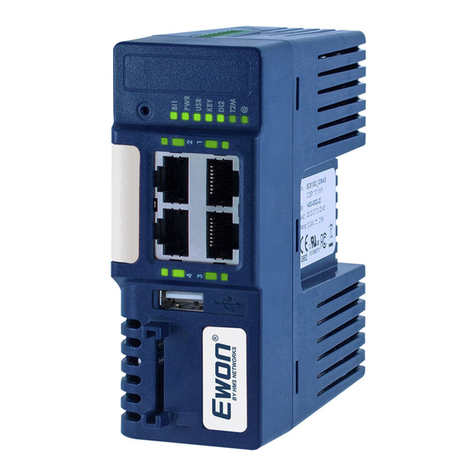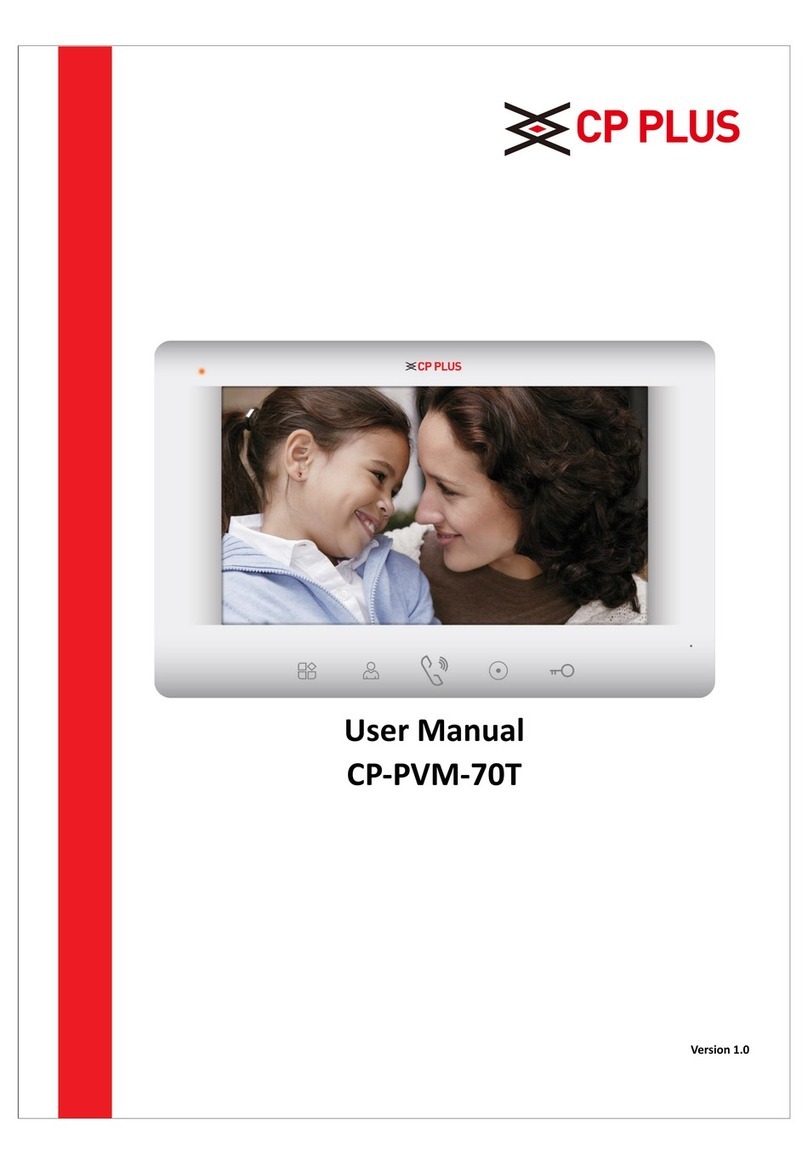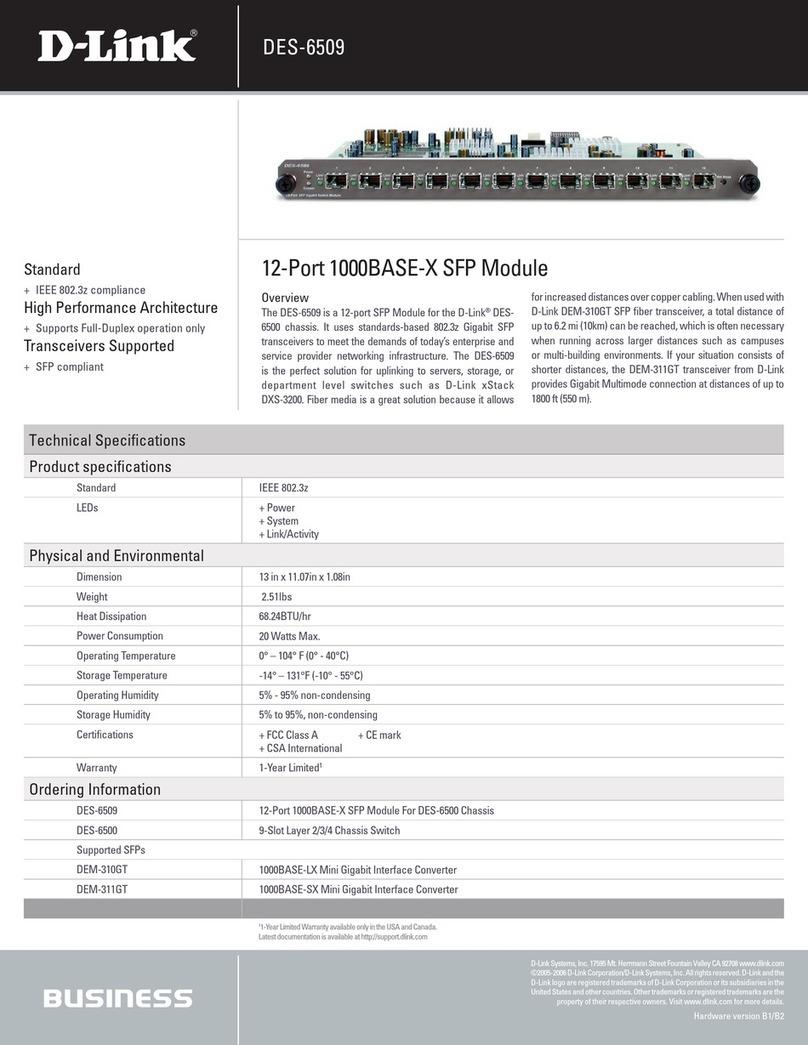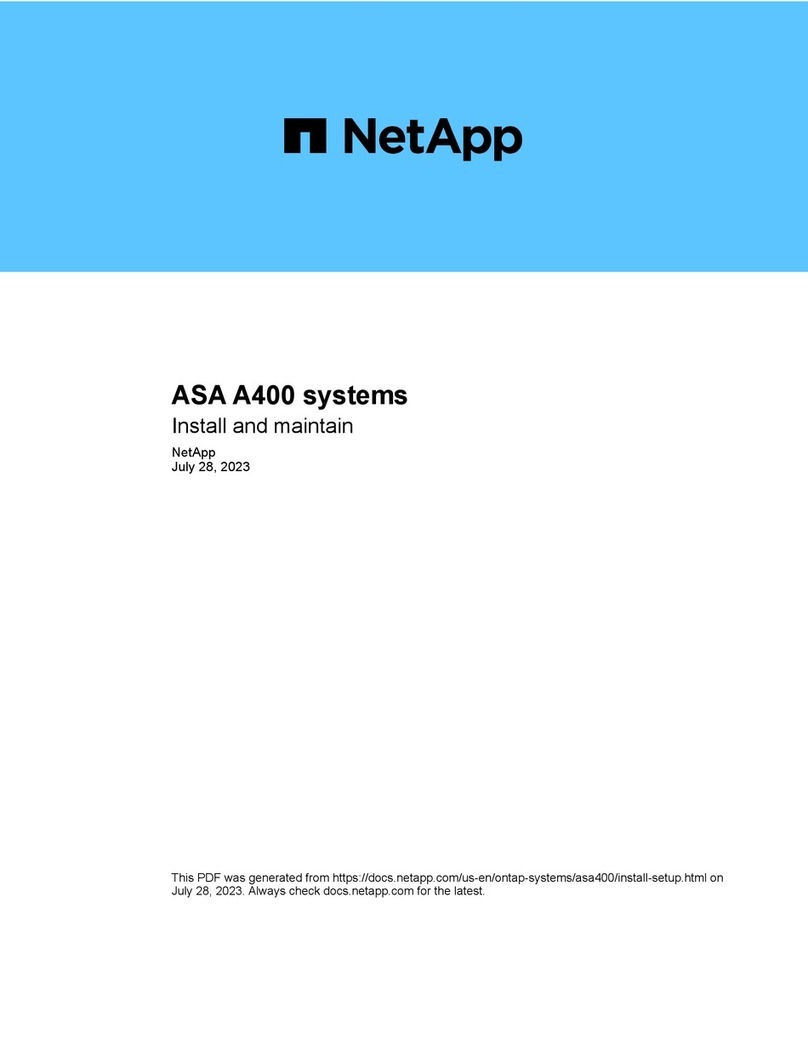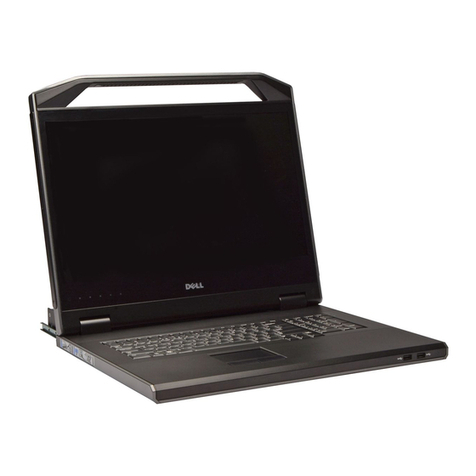General DataComm SpectraComm 800 T3 User manual

The Best Connections in the Business
General DataComm
6SHFWUD&RPP#;33#76#
Data Service Unit
Installation & Operation Manual
076R160-000
Issue 4
May 2012

Copyright
©2012 General DataComm, Inc. ALL RIGHTS RESERVED.
This publication and the software it describes contain proprietary and confidential information. No part of this
document may becopied, photocopied, reproduced, translated or reduced to any electronic or machine-readable
format without prior written permission of General DataComm,Inc. The information in this document is subject
to change without notice. General DataComm assumes no responsibility for any damages arising from the use
of this document, including but not limited to, lost revenue, lost data, claims by third parties, or other damages.
If you have comments or suggestions concerning this manual, please contact:
General DataComm, Inc.
Technical Publications
6 Rubber Avenue
Naugatuck, Connecticut USA 06770
Telephone: 1 203 729 0271
Trademarks
All brand or product names are trademarks or registered trademarks of their respective companies or
organizations.
Documentation
Revision History - GDC P/N 076R160-000
Related Publications
-REV is the hardware revision (-000,-001, etc.)
-VREF is the most current software version (-V600 is Version 6.0.0.)
In addition to the publications listed above, always read Release Notes supplied with your products.
Issue Date Description of Change
1 June 2000 Initial Release
2 March 2003 Supports 14 subrates at the front panel HSSI interface
3 June 2005 General updates and clarifications.
4 May 2012 Minor updates/enclosure branding
Description Part Number
SpectraComm/UAS Shelf Installation and Operation Manual 010R302-REV
SpectraComm 2000 Shelf Installation & Operation Manual 010R358-REV
SpectraComm Standalone Enclosures Installation & Operation Manual 010R112-000
SpectraComm Manager Card 048R303-000
TEAM Core Software Operation Manual 058R720-REV
TEAM 800 T3 Operation Manual 076R160-VREF

076R160-000 SpectraComm 800 T3 Data Service Unit i
Issue 4 Installation and Operation Manual
Table of Contents
Preface
Precautions .........................................................................................................................iv
Compliance ............................................................................................................................... v
Support Services and Training................................................................................................. vi
Corporate Client Services...................................................................................................vi
Factory Direct Support & Repair .......................................................................................vi
Contact Information ...........................................................................................................vi
Chapter 1: Introduction and Specifications
Product Overview .................................................................................................................. 1-1
Intended Use.....................................................................................................................1-1
SC800 T3 Features and Benefits......................................................................................1-2
Management Features.......................................................................................................1-3
Diagnostics.......................................................................................................................1-4
Alarm Reporting...............................................................................................................1-4
Typical SC800 T3 Application.........................................................................................1-5
Technical Specifications........................................................................................................ 1-6
Chapter 2: Installation and Setup
Unpacking Instructions.....................................................................................................2-1
SpectraComm Shelves and Enclosures ............................................................................2-2
Hardware Options.............................................................................................................2-3
Installing the Unit in the Shelf............................................................................................... 2-5
Cabling and Powering Up the DSU..................................................................................2-5
Power On Self Test Procedure .......................................................................................2-10
Dedicated Remote Wake-Up Procedure.........................................................................2-10
Chapter 3: SC800 T3 Operation
Terminal Interface via SCM.............................................................................................3-1
Terminal Interface without SCM......................................................................................3-1
Terminal Interface via the SCM............................................................................................. 3-3
Making a Craft Connection via the SCM.........................................................................3-3
Making a Telnet Connection............................................................................................3-3
Element Access...................................................................................................................... 3-4
SC800 T3 Main Menu............................................................................................................ 3-5
SC800 T3 Configuration Menu.............................................................................................. 3-6
Configuration Basics........................................................................................................3-6
Network Options Screen...................................................................................................3-7
DTE Options Screen.........................................................................................................3-8
Alarm Configuration Screens...........................................................................................3-9

ii SpectraComm 800 T3 Data Service Unit 076R160-000
Installation and Operation Manual Issue 4
Table of Contents
Alarm Definitions ..........................................................................................................3-13
SC800 T3 Diagnostics Screen............................................................................................. 3-15
Monitor Alarm Status Screen.............................................................................................. 3-17
SC800 T3 Maintenance Screen ........................................................................................... 3-18
What Are You Screen....................................................................................................3-19
Reset Statistics Selections Screen..................................................................................3-19
Firmware Download Menu............................................................................................3-20
Performance Screen............................................................................................................. 3-23
Chapter 4: Diagnostics
Diagnostics Overview............................................................................................................ 4-1
Local Loopback Test........................................................................................................ 4-2
Local Loopback with Self Test........................................................................................ 4-3
Payload Loopback Test and Line Loop Test ................................................................... 4-4
End-to-End Self Test........................................................................................................ 4-5
Remote Lineloop and Remote Payload Loop Tests......................................................... 4-6
Remote Lineloop with Self Test and Remote Payload Loop with Self Test ...................4-7
DTE Loopback Test......................................................................................................... 4-8

076R160-000 SpectraComm 800 T3 Data Service Unit iii
Issue 4 Installation and Operation Manual
Preface
Scope of this Manual
This manual describes installation and operation of the SpectraComm 800 T3 (SC800 T3). This
document is intended for network operators and installers and assumes a working knowledge of
data communication equipment.
The information in this manual has been carefully checked and is believed to be entirely reliable.
However, as General DataComm improves the reliability, function and design of its products, it is
possible that information herein may not be current. Check the General DataComm website at
http://www.gdc.com for updated manuals and product information, or contact your General
DataComm field representative.
General DataComm, Inc.
6 Rubber Avenue
Naugatuck, Connecticut, USA 06770
Tel: 1 203 729-0271
Safety Information
This manual should be read in its entirety and all procedures completely understood before
installing or operating the unit. The notes that appear throughout this manual must be read prior to
any installation or operating procedure. Examples of notes used in this manual are shown below.
Note A note provides essential operating information not readily apparent which you should be
particularly aware of. A note is typically used as a suggestion.
Important Indicates an emphasized note. It is something you should be particularly aware of; something
not readily apparent. Important is typically used to prevent equipment damage.

Preface
iv SpectraComm 800 T3 Data Service Unit 076R160-000
Installation and Operation Manual Issue 4
Precautions
The CAUTION, WARNING, and DANGER statements that appear throughout this manual are
intended to provide critical information for the safety of both the service engineer and operator,and
enhance equipment reliability. The definitions and symbols for such statements comply with ANSI
Z535.2, American National Standard for Environmental and Facility Safety Signs, and ANSI
Z535.4, Product Safety Signs and Labels, issued by the American National Standards Institute.
Safety Guidelines
Under proper conditions, this unit will operate reliably and safely in your network. If any
component is improperly handled or installed, equipment failure or personnel hazard may occur.
Use caution and common sense when installing network wires. Use the following guidelines,
especially when unsafe conditions exist or when potentially hazardous voltages are present:
• Repairs must be performed by qualified service personnel only.
• To reduce the risk of electrical shock, do not operate equipment with the cover removed.
• Never install network jacks in a wet location unless the jack is designed for that location.
• Never touch uninsulated network wires or terminals unless the network line is disconnected
at the network interface.
• Never install network wiring during an electrical storm.
Antistatic Precautions
Electrostatic discharge (ESD) results from the buildup of static electricity and can cause computer
components to fail. ESD occurs when a person whose body contains a static buildup touches a
computer component. This product card may contain static-sensitive components that are easily
damaged. Proper handling, grounding and precautionary ESD measures are essential. Keep parts
and cards in antistatic packaging during transport or when not in use. When handling always use
antistatic floorpads, workbench pads and an antistatic wrist strap connected to a grounded
equipment frame or chassis.
If a wrist strap is not available, periodically touch an unpainted metal surface on the equipment.
Never use a conductive tool, like a screw driver or paper clip to set switches.
CAUTION statements indicate conditions or practices that can cause damage to equipment
or loss of data.
WARNING statements indicate a potentially hazardous situation which, if not avoided,
may result in minor to moderate injury. It may also be used to alert against unsafe practices.
DANGER statements indicate an imminently hazardous situation which, if not avoided, will
result in death or serious injury.

Preface Compliance
076R160-000 SpectraComm 800 T3 Data Service Unit v
Issue 4 Installation and Operation Manual
Compliance
Part 15 Compliance
This device complies with Part 15 of the FCC rules. Operation is subject to the following two
conditions:
1. This device may not cause harmful interference and
2. This device must accept any interference received, including interference that may cause
undesired operation.
Electromagnetic Compatibility
This Class A digital apparatus complies with Canadian ICES-003.
La Compatibilité d’ Eléctro-magnetique
Cet appareil numerique de la classe A est conforme a la norme NMB-003 du Canada.
NEBS Compliance
Certified by independent labs for NEBS compliance to standards:
GR63 - Physical Protection
GR1089 - EMC and Safety

Preface Support Services and Training
vi SpectraComm 800 T3 Data Service Unit 076R160-000
Installation and Operation Manual Issue 4
Support Services and Training
GeneralDataCommofferstwocomprehensivecustomersupportorganizationsdedicatedtopre-and
post-sale support services and training for GDC products. Corporate Client Services and Factory-
Direct Support & Repair assist customers throughout the world in the installation, management,
maintenance and repair of GDC equipment. Located at GDC’s corporate facility in Naugatuck,
Connecticut USA, these customer support organizations work to ensure that customers get
maximum return on their investment through cost-effective and timely product support.
Corporate Client Services
Corporate Client Services is a technical support and services group that is available to GDC
customers throughout the world for network service and support of their GDC products. Customers
get thereliable supportand training required for installation, management and maintenance of GDC
equipment in their global data communication networks. Training courses are available at GDC
corporate headquarters in Naugatuck, Connecticut, as well as at customer sites.
Factory Direct Support & Repair
GDC provides regularand warranty repair services through Factory Direct Support & Repair at its
U.S. headquarters in Naugatuck, Connecticut. This customer support organization repairs and
refurbishes GDC products, backed by the same engineering, documentation and support staff used
to build and test the original product. Every product received for repair at Factory Direct Support
& Repair is processed using the test fixtures and procedures specifically designed to confirm the
functionality of all features and configurations available in the product.
As part of GDC’s Factory Direct program, all product repairs incorporate the most recent changes
and enhancements from GDC Engineering departments, assuring optimal performance when the
customer puts the product back into service. Only GDC’s Factory Direct Support & Repair can
provide this added value.
Contact Information
General DataComm, Inc.
6 Rubber Avenue
Naugatuck, Connecticut 06770 USA
Attention: Corporate Client Services
Telephones: 1 800 523-1737
1 203 729-0271
Fax: 1 203 729-3013 or 1 203 729-3014
Email: client[email protected]m
General DataComm, Inc.
6 Rubber Avenue
Naugatuck, Connecticut 06770 USA
Attention: Factory Direct Support & Repair
Telephones: 1 800 523-1737
1 203 729-0271
Fax: 1 203 723-2883
Email: factorydirect@gdc.com
Hours of Operation:
Monday - Friday 8:30 a.m. - 5:00 p.m. EST
(excluding holidays)
http://www.gdc.com

076R160-000 SpectraComm 800 T3 Data Service Unit 1-1
Issue 4 Installation and Operation Manual
Chapter 1: Introduction and
Specifications
Product Overview
The SpectraComm 800 T3 Data Service Unit (SC 800 T3 DSU) provides a flexible and versatile
connection method to T3 telecommunications networks. It converts data from a standard High
Speed Serial Interface (HSSI) port (running from 3 to 44.2 Mbps) to a standard DS-3 port.
Intended Use
The SC800 T3 is a 7-inch by 9.5 inch printed circuit card that supports comprehensive, non-
intrusive network management capabilities, operating inconjunction withan SNMP controller. The
DSU is software-managed so that an operator at a central site can configure its options by means of
SNMP, TELNET or TEAMmanagement. Diagnostictestingperformed through SNMP requires no
intervention by personnel at remote sites.
The SC 800 T3 DSU integrates with a variety of GDC SpectraComm network elements which can
be co-located in a SpectraComm shelf. A SpectraComm 2000 shelf can hold up to two single-slot
product cards, and for high-density applications, the SpectraComm 5000 shelf can hold up to 16
single-slot cards. Shelves fit in 19- and 23-inch wide equipment racks. For non-NEBS standalone
applications, the SpectraComm AC or DC standalone enclosure can hold one SC 800 T3 DSU.
Figure 1-1 SC800 T3 in SpectraComm Shelves and Enclosures
STANDALONE
ENCLOSURE
SC 2000
SHELF
General
DataComm
800T3
D
T
E
I
N
T
F
C
NTWK INTFC
XMT
RCV
800T3
D
T
E
I
N
T
F
C
NTWK INTFC
XMT
RCV
V.F 28.8
LL
RL
DL
SEL
TXD RXD
RTS CTS
DCD GD
TM ALM
DTR OH
NR ND
ADV
ST
GPS-11E
POWER
SUPPLY
POWER
ON
FAIL
POWER
ON ( | )
OFF (0)
GPS-11E
POWER
SUPPLY
POWER
ON
FAIL
POWER
ON ( | )
OFF (0)
SC 5000
SHELF
Power
Supplies SCM
Card
SCM
CTRL
SD RD
SD RD
MR ND
TM ALM
INS ON
NR ND
L
A
N
W
A
N
800T3
D
T
E
I
N
T
F
C
NTWK INTFC
XMT
RCV
800T3
D
T
E
I
N
T
F
C
NTWK INTFC
XMT
RCV
SPECTRACOMM
800 T3 Cards
800T3
D
T
E
I
N
T
F
C
NTWK INTFC
XMT
RCV
800T3
D
T
E
I
N
T
F
C
NTWK INTFC
XMT
RCV
SPECTRACOMM
Compatible Network Elements
SLOT 1:SC Network Element SLOT 2:SC800 T3 DSU

Introduction and Specifications Product Overview
1-2 SpectraComm 800 T3 Data Service Unit 076R160-000
Installation and Operation Manual Issue 4
SC800 T3 Features and Benefits
• Provides interface to T3 services with the following bit rates:
• T3 network interface via two BNC connectors is 44.7 Mbps
• T3 payload through subrate HSSI port is 3 to 44.2 Mbps in increments
of 3 Mbps.
• Compatible with other T3 DSUs running at full rate.
• Selectable Line Type: DS3 (0-100 ft) or DSX-3 (100-450 ft.)
• Supports both M13 and C-bit parity framing.
• 75 ohm coax DS3 interface. Two BNC connectors for Transmit and
Receive.
• Selectable transmit timing sources: Recovered or internal clock
• May be housed in SpectraComm shelves with other SpectraComm data sets.
Also installs in the single-slot SpectraComm AC or DC enclosures.
• Front-panel LEDs on the SC 800 T3 indicate power and network, test mode,
and alarm conditions.
• Provides full network management by means of the shelf-resident SCM and
associated SNMP or Telnet manager.
• Remote unit may be network managed from the local unit’s SCM, via an in-
band management channel.
• Provides dual image flash memory to allow download of firmware.
• Provides non-volatile memory to maintain configuration after power
outages.
• Supports high speed router applications.
• Hot-swappable cards are auto-configurable with SCM.
• TFTP downloadable firmware to dual-image flash memory.
• Provides configurable diagnostic loopback tests
• Supports T3 and unit alarms
800T3
D
T
E
I
N
T
F
C
NTWK INTFC
XMT
RCV

Introduction and Specifications Product Overview
076R160-000 SpectraComm 800 T3 Data Service Unit 1-3
Issue 4 Installation and Operation Manual
Management Features
Backplane Management Bus
TheSpectraComm5000shelvesprovideabackplanemanagementbusfortransferringmanagement
data between an SCM card and the managed devices in the shelf. The SCM card functions as an
SNMP agent for the control of a variety of compatible devices. The SCM card also provides the
terminal interface for most devices, including the SC800 T3.
Discovery and Polling
The SCM card performs network discovery for compatible elements located in the shelf and stores
element information in its localdatabase.The user can accessthisinformationbymeansoftheSCM
Management Information Base (MIB) and a MIB browser. After initial discovery, the SCM card
polls slot addresses for any alarms and statistical data on network elements.
Auto Configuration
The SCM card stores a copy of the configuration data for any SC800 T3 card installed in its shelf.
When a SC800 T3 card is removed from the shelf and replaced with another SC800 T3 card in the
same slot, the SCM card automatically configures the new DSU with the Network, Channel, and
Alarm Configuration option settings that were in effect for the old DSU. Auto-configuration is not
available for the remote unit.
Note For comprehensive information on SCM functionality, refer to the SCM Installation and Operation Manual.
SNMP MIBs
The software of the SC800 T3 includes Simple Network Management Protocol (SNMP)
Management Information Base (MIB) files that enable control by an SNMP network controller. A
SpectraComm Manager (SCM) card is required to access the MIBs.
Terminal Interface
When there is a SCM card co-located with the SC800 T3 DSU, a terminal interface to the SCM will
provide a Shelf Inventory screen from which the DSU can be selected. The resulting SC800 T3
menus and screens allow you to monitor, configure and otherwise control DSU operation. This
terminal interface is accessed via a Telnet connection to the co-located SCM or through a craft
connection to the SCM front panel CTRL port.
Management via TEAM Software
The SC800 T3 DSU can be managed through TEAM software applications (TEAM Core and
TEAM 800 software) which provide a GUI interface for Discovery and Mapping functions of
TEAM Applications within the HP OpenView framework. TEAM applications use Simple
Network Management Protocol (SNMP) to configure and control the operation of SpectraComm
devices through the SCM card that shares the same shelf as those network elements.
All TEAM applications use the HP OpenView APIs (Application Programmer Interfaces) to
integrate with HP OpenView Windows and other network management applications. Menu items
are accessed via pulldown menus from theappropriate HP OpenView submap or from a Front Panel
toolbar.
Note For more information on GDC TEAM software products, refer to the TEAM Core and TEAM 800 T3
Operation Manuals and Release Notes.

Introduction and Specifications Product Overview
1-4 SpectraComm 800 T3 Data Service Unit 076R160-000
Installation and Operation Manual Issue 4
Diagnostics
You can use the loopbacks and tests to isolate system faults to a particular DTE, data set, or line.
Diagnostic testing performed through SNMP does not require intervention by personnel at remote
sites.The DSU facilitates fault isolation in a digital network by providing comprehensiveloopback
tests listed below.
Alarm Reporting
Alarms can be configured for reporting in the event of a wide variety of conditions, listed below.
You may mask or unmask all of the alarms except the Power Cycle alarm. The DSU also
accumulates alarm counts, which can be displayed by an SNMP controller.
Note For a detailed description of alarm reporting criteria, refer to Chapter 3.
Table 1-1 SC 800 T3 Diagnostics
Master Only Master and Remote
Line Loopback Remote Line Loopback End to End Test
Payload Loopback Remote Line Loopback with Self Test
Local Loopback Remote Payload Loopback
Local Loop with Self Test Remote payload with Self Test
DTE Loopback
Table 1-2 SC800 T3 Alarm Reporting
Alarm Type Alarms
Network Alarms Loss Of Signal
Out Of Frame
Alarm Indication Signal
Remote Not Responding
Remote Alarm Indication
DTE Alarms DTE Clock Loss
TMT Data No Transitions
RCV Data No Transitions
(Not Supported)
DTE Ready Loss
DTE Test
Threshold Alarms Errored Seconds
Errored Seconds - Line
Severely Errored Seconds
Severely Errored Frame/AIS
Unavailable Seconds
Code Violations
Other Alarms Unsolicited Test
Configuration Change
Power Supply - Top/Bottom

Introduction and Specifications Product Overview
076R160-000 SpectraComm 800 T3 Data Service Unit 1-5
Issue 4 Installation and Operation Manual
Typical SC800 T3 Application
Figure 1-2 shows the SC 800 T3 supporting high-speed router connectivity for enterprise networks.
Both the master and the remote unit SC800 T3 device are managed through TEAM or via Telnet
via the inband network management channel. The remote unit can also be directly managed at its
craft port or via a dial-up modem.
Figure 1-2 SC 800 T3 Supporting a High-Speed Router
CRAFT
MANAGEMENT
SC800 T3
DSU
POWER
SUPPLIES SCM
GPS-11E
POWER
SUPPLY
POWER
ON
FAIL
POWER
ON ( | )
OFF (0)
GPS-11E
POWER
SUPPLY
POWER
ON
FAIL
POWER
ON ( | )
OFF (0)
CENTRAL SITE
SCM
CTRL
SD RD
SD RD
MR ND
TM ALM
INS ON
NR ND
L
A
N
W
A
N
800T3
D
T
E
I
N
T
F
C
NTWK INTFC
XMT
RCV
CRAFT
MANAGEMENT
TEAM
MANAGEMENT
TELNET
MANAGEMENT
REMOTE SITE
Transmit
Receive
ROUTER
800T3
D
T
E
I
N
T
F
C
NTWK INTFC
XMT
RCV
V.F28.8
LL
RL
DL
SEL
TXD RXD
RTS CTS
DCD GD
TM ALM
DTR OH
NR ND
ADV
ST
Transmit
Receive
ROUTER
T3
NETWORK

Introduction and Specifications Technical Specifications
1-6 SpectraComm 800 T3 Data Service Unit 076R160-000
Installation and Operation Manual Issue 4
Technical Specifications
The following table describes the physical, operational, and environmental specifications for the
SpectraComm 800 T3 DSU. Conforming to these specifications ensures maximum system
performance and reduces the chances of mechanical breakdown and personnel hazard.
Table 1-3 SpectraComm 800 T3 Card Specifications
Type Specification Description
DS3 Network
Interface Data Rates T3 Network interface is 44.736 Mbps.
T3 Payload through the HSSI port is 3 to 44.2 Mbps in 3 Mbps
increments.
Communication Line T3 Digital Carrier
Line Impedance 75 Ohms, unbalanced
Network Port Interface Two DS3 BNC coaxial connectors, Transmit and Receive
Line Code B3ZS
Line Buildout Short (0 to 100 ft.) or Long (100 to 450 ft.) of coaxial cable.
Electrical Compatibility ANSI T1.404-1994
DS3 Framing Formats ANSI T1.107-1995, M23 multiplex or C-bit parity
Transmit Timing Sources Internal timing source: Stratum 4E (Local Oscillator)
External Timing: Recovered from the network
In-Service Performance ANSI T1.231-1997 Digital Hierarchy
Customer
Interface Physical Port HSSI EIA/TIA 612 50-pin SCSI-2 connector
Compatibility TIA/EIA 612, TIA/EIA 613
Data Rates 3 to 44.2 Mbps in 3 Mbps increments
Timing Source Recovered from Network Timing
Diagnostics DS3 Monitoring: Cumulative errored seconds, P-bit errors, C-bit errors, FEBE errors.
Loopback Tests:
Line loopback, Payload Loopback, Local Loopback, Local Loopback with Self-Test, DTE
Loopback, Remote Lineloop, Remote Lineloop with Self-Test, Remote Payload Loopback
Remote Payload Loopback with Self-Test, End-to-End Self-Test
Electrical Power Dissipation 6.4 W maximum per slot, Load Number 1.1
Fusing Two 2.5 A, 125V (GDC P/N 215-201-009)
One 5 A, 125V (GDC P/N 215-201-021)
Physical
Dimensions Width: 178 mm (7.0 in.)
Height: 21 mm (0.81 in.)
Depth: 241 mm (9.5 in.)
Weight: 0.28 kg (10 oz.)
Shipping weight: 0.74 kg (1 lb 10 oz)
Environment Non-operating Temp. -40 to 85 degrees C (-40 to 158 degrees F)
Operating Temp. 0 to 50 degrees C (32 to 122 degrees F)
(Derate by 1 degree C/1000 ft above sea level)
Operating Humidity 5% - 95% Relative humidity, non-condensing
Non-operating Altitude 0 m to 12,191 m (0 ft. to 40,000 ft.)
Operating Altitude 0 m to 3,047 m (0 ft. to 10,000 ft.)

076R160-000 SpectraComm 800 T3 Data Service Unit 2-1
Issue 4 Installation and Operation Manual
Chapter 2: Installation and Setup
Installation Overview
This chapter describes the installation of the SC800 T3 DSU in a SpectraComm shelf or enclosure.
The DSU should be installed in a ventilated area where the ambient temperature does not exceed
the environmental specifications listed in Table 1-3. Do not install the DSU above other equipment
that generates large amounts of heat (e.g., power supplies).
Unpacking Instructions
The SC800 T3 unit is shipped in shock-absorbent packing within a corrugated box and is pre-
assembled, tested and ready for use. Some components will not be required/supplied for your
network installation. Remove each component from the box and perform a thorough inspection. If
any component appears damaged, contact the shipper immediately. Alldamaged components must
be retained until an inspection by the shipper has been completed. If it is necessary to re-package
and return the unit, use the original box and packing material.
Table 2-1 lists the standard and optional equipment.Part numbers use -XXX to designate cable
length in feet. Table 2-2 lists the compatible shelf systems.
Note When the DSU is installed in a SC 5000 shelf with a co-located SCM, all network and interface connections
are made at the SC800 T3 front panel.
Table 2-1 Equipment Checklist
Item Description Part Number
SC800 T3 DSU T3 Subrate Data Service Unit 076P015-001
Cables & Adapters HSSI Cable, male/male angled 75° 027H625-0xx
Network Interface Cable, 75-ohm BNC transmit/receive 026H004-xxx
10Base-2 Cable (SCM to LAN) in 5-meter length.
Also 15 meter (S-125H004-001) and 30 meter (S-125H005-001). S-125H003-001
RJ45 Cable (SCM front panel CTRL port to SNMP network
manager or VT100-compatible terminal 830-128-8xx
Cable Tray (routes front panel cables to the rear of the rack) 010B224-001
Adapter - 10Base-T, twisted pair (SCM to LAN) 029H209-001
Adapter - 10Base-2, coaxial cable (SCM to LAN 058B033-001
Terminal Adapter, IBMPC-RS561 DB9F/RJ45 029H211-001
Terminal Adapter, RS232-RS561 DB25M 029H210-001
Terminal Adapter, DB9 to DB25 209-036-015

Installation and Setup
2-2 SpectraComm 800 T3 Data Service Unit 076R160-000
Installation and Operation Manual Issue 4
SpectraComm Shelves and Enclosures
The SC 800 T3 DSU can be installed in any card slot of any SpectraComm shelf or enclosure. The
shelf or enclosure should be should be installed in a ventilated area where the ambient temperature
does not exceed the environmental specifications listed in Table 1-3. Do not install the DSU above
other equipment that generates large amounts of heat (e.g., power supplies).
• The SpectraComm 2000 shelf can be mounted in 19- and 23- inch wide equipment racks and
can house two plug-in cards.
• The SpectraComm AC or DC standalone enclosure can house one card.
• The high density SpectraComm 5000/UAS shelf can be mounted in 19- and 23- inch wide
equipmentracksand can house up to 16 plug-in cards includinga singleSCM card,ortwo SCM
cards installed as a primary and a backup. The shelf includes a backplane that supports a
management bus for the transfer of management data between an SCM card and the managed
devices in the housing. The SCM card functions as an SNMP agent for the control of a variety
of compatible devices. For some devices, including the SC 800 T3 DSU, the SCM card also
provides access to terminal interface functionality. The backplanes of two SpectraComm
shelves can be linked by cables so that a total of 32 card slots function as though connected to
the same backplane. In that way, one SCM can be responsible for control functions for up to 31
other devices.
Table 2-2 SpectraComm Shelf Systems
Item Description Part Number
SpectraComm
Standalone
Enclosures
RA1000 single-slot AC enclosure 010M301-001
SC 1002 single-slot DC enclosure 010B301-006
SpectraComm
Modular Shelves SpectraComm 5000 Shelf MS-2 Model 1, includes two 8-slot,
dual RJ45 Zone 1 connector panels, 100/120 Vac 010M054-001
SpectraComm 5000 Shelf MS-2 Model 2, includes two 8-slot,
dual RJ45 Zone 1 connector panels, -48, 60 Vdc 010M055-001
SpectraComm 5000 Shelf MS-2 Model 10, includes two 8-slot,
dual RJ45 Zone 1 connector panels, -48, 60 Vdc, (Redundant
Power)
010M070-001
SpectraComm 2000 Shelf, single power supply 010B226-001
SpectraComm 2000 Shelf, redundant power supply 010B226-002
SpectraComm
Mass Term Shelves SpectraComm Shelf MS-2 Model 7, includes one 16-slot,
50-pin/universal Zone 1 connector panel, 100/120 Vac 010M073-001
SpectraComm Shelf MS-2 Model 8, includes one 16-slot,
50-pin/universal Zone 1 connector panel, 220/240 Vac 010M074-001
SpectraComm Shelf MS-2 Model 9, includes one 16-slot,
50-pin/universal Zone 1 connector panel, -48, 60 Vdc 010M075-001
SpectraComm Shelf MS-2 Model 12, includes one 16-slot,
50-pin/universal Zone 1 connector panel, -48, 60 Vdc
(Redundant Power)
010M076-001
Note The SpectraComm Remote Access enclosure (RA1000) replace the SC1001A and previous
versions of the SpectraComm AC standalone enclosure.

Installation and Setup
076R160-000 SpectraComm 800 T3 Data Service Unit 2-3
Issue 4 Installation and Operation Manual
Hardware Options
Shelf Slot Addressing Guidelines
• The DSU communicates with an SNMP controller through the SpectraComm Manager card
(SCM) co-located in the shelf.
• The network management system employs a slot-line-drop method of addressing network
elements:
• Slot address is the number of the slot it occupies in the SpectraComm Shelf.
• Line address is always 1, drop 0 is the master unit, and drop 1 is the the remote unit.
• If the firmware is ever changed on the SC800 T3, the EEPROM containing the unit’s
configuration will beerased and the unit willhave to be reassigned using thenew serial number.
Note The DSU serial number must be reported to the system controller operator when the unit is initially installed
and configured. The serial number is located on the back of the front panel.
Timing Options
While the SC 800 T3 DSU can occupy the same shelf as other components of a SpectraComm
system and be controlled through an SCM card that is also controlling other SpectraComm system
cards, the SC 800 T3 DSU timing is completely independent from the SpectraComm shelf timing.
Timing options determine the clock source for data the SC 800 T3 DSU transmits at its network
interface, and for both transmit and receive channel data. The SC 800 T3 DSU supports two timing
modes:
• Recovered Timing (default), based on the incoming signal from the network.
• Internal Timing, provided by the oscillator incorporated in the DSU.
SpectraComm 800 T3 Card Options
Table 2-3 and the associated illustration describe the card option switch locations and their factory
default settings.

Installation and Setup
2-4 SpectraComm 800 T3 Data Service Unit 076R160-000
Installation and Operation Manual Issue 4
Special Considerations
When the DSU is in a shelf with an SCM and S1-1 is set to OFF, the DSU operates as a master unit
and will not migrate to remote mode. If an SCM is not detected in the shelf and S1-1 is set to OFF,
the DSU operates as a remote unit.
When the DSU is in a SC 5000 shelf and S1-1 is set to ON, the DSU operates as a remote unit. The
backplane is enabled and the Craft port is directed to the DTE connector.
When the DSU is in a SC 2000 shelf and S1-1 is set to ON, the DSU operates as a remote unit. The
backplane is disabled and the Craft port is enabled.
Table 2-3 SC800 T3 Card Options (Shown in Factory Default Settings)
Location Function Option Action
X3 Selects active or backup
versions of downloaded
firmware.
To force the card to run the backup firmware, set the jumper to the opposite
position to what it was the last time the card was powered up.
S1-1 Selects the operation of
the DSU as a master or
remote device.
OFF (Default) Remote Only: The shelf backplane is enabled and the Craft
port is disabled
(see Special Considerations below)
.
ON Remote Only Disabled: Inband management supported
(see Special Considerations below)
S1-2 Sets the Frame Format
for compatibility with the
device at the other end of
the T3 line.
OFF (Default) C-bit Parity
ON M13 (Inband management not supported)
S1-3 Selects Cable Length OFF (Default) Short: use this setting for 0-100 ft cables.
ON Long: use this setting for 100-450 ft cables.
S1-4 Selects Timing OFF (Default) Recovered: derives transmit T3 timing from the recovered T3
timing. Use this setting for connections to a T3 network.
ON Internal: generates transmit T3 timing from an internal
oscillator. Use this setting on one end of a back-to-back link.
12345678
ON
1
X3
S1
OFF
076P015-001
SC800 T3
800T3
D
T
E
I
N
T
F
C
NTWK INTFC
XMT
RCV
Note: ALL S1 OPTIONS ARE SHOWN
IN THE DEFAULT (OFF) POSITION.

Installation and Setup Installing the Unit in the Shelf
076R160-000 SpectraComm 800 T3 Data Service Unit 2-5
Issue 4 Installation and Operation Manual
Installing the Unit in the Shelf
1. Insert the card into its slot in a SpectraComm shelf (with the GDC logo on top) until the card
makes contact with the backplane.
2. Pull down the insertion/extraction tab on the front panel and firmly push the card in until it
seats in the rear connectors.
3. Perform the setups, connections, pre-operation checks and any desired option settings in their
entirety, as described in this chapter.
Cabling and Powering Up the DSU
Table 2-4 shows the cabling of a typical network installation, with special considerations listed
below.
• Depending on your terminal, DB9 female to DB25 female adapter may be required (GDC P/N
209-036-015).
• When making a terminal connection to the SC800 T3 rear panel TERM port of a SC 2000 shelf,
it is important to note that Hardware Flow Control (Carrier Detect or DCD) is not supported.
• For LAN connections (10BaseT) plug adapter (GDC P/N 029H209-001) into the SCM rear
panel Zone 3 connector. Then attach cable (GDC P/N 021H101-XXX) to the adapterand to the
LAN.
• For LAN connections (10Base2) plug adapter (GDC P/N 058B033-001) into the SCM rear
panel Zone 3 connector. Then attach cable (GDC P/N S-125H003-004 or S-125H003-006 to
the adapter and to the LAN.

Installation and Setup Installing the Unit in the Shelf
2-6 SpectraComm 800 T3 Data Service Unit 076R160-000
Installation and Operation Manual Issue 4
Note A Cable Tray (GDC P/N 010B224-001) can be used to route front panel cables to the rear of the rack.
Note For detailed installation and cabling information for other GDC shelf cards, refer to the GDC Technical
Publications that support each specific product card as well as your SpectraComm shelf or enclosure.
Table 2-4 Typical SC800 T3 Cabling
Figure Ref. Description Part Number
1 HSSI Cable, male/male angled 75° 027H625-0xx
2 Network Interface Cable, 75-ohm BNC transmit/receive 026H004-xxx
3 10Base-2 Cable (SCM to LAN) S-125H003-XXX
4 RJ45 Cable (SCM front panel CTRL port to SNMP network manager or
VT100-compatible terminal 830-128-8xx
5 Adapter - 10Base-T, twisted pair (SCM to LAN) 029H209-001
6 Adapter - 10Base-2, coaxial cable (SCM to LAN 058B033-001
7 Terminal Adapter, IBMPC-RS561 DB9F/RJ45 029H211-001
8 Terminal Adapter, RS232-RS561 DB25M 029H210-001
9 Terminal Adapter, DB9 to DB25 209-036-015
CRAFT
MANAGEMENT
SC800 T3
SCM
GPS-11E
POWER
SUPPLY
POWER
ON
FAIL
POWER
ON ( | )
OFF (0)
GPS-11E
POWER
SUPPLY
POWER
ON
FAIL
POWER
ON ( | )
OFF (0)
CENTRAL SITE
SCM
CTRL
SD RD
SD RD
MR ND
TM ALM
INS ON
NR ND
L
A
N
W
A
N
800T3
D
T
E
I
N
T
F
C
NTWK INTFC
XMT
RCV
CRAFT
MANAGEMENT
TEAM
MANAGEMENT
TELNET
MANAGEMENT
REMOTE SITE
Transmit
Receive
ROUTER
800T3
D
T
E
I
N
T
F
C
NTWK INTFC
XMT
RCV
V.F28.8
LL
RL
DL
SEL
TXD RXD
RTS CTS
DCD GD
TM ALM
DTR OH
NR ND
ADV
ST
Transmit
Receive
ROUTER
T3
NETWORK
1
2
4
2
2
2
1
3
65
or
98
or
7
or
Table of contents
Other General DataComm Network Hardware manuals

General DataComm
General DataComm DeskTop T1 Owner's manual

General DataComm
General DataComm 551 User manual
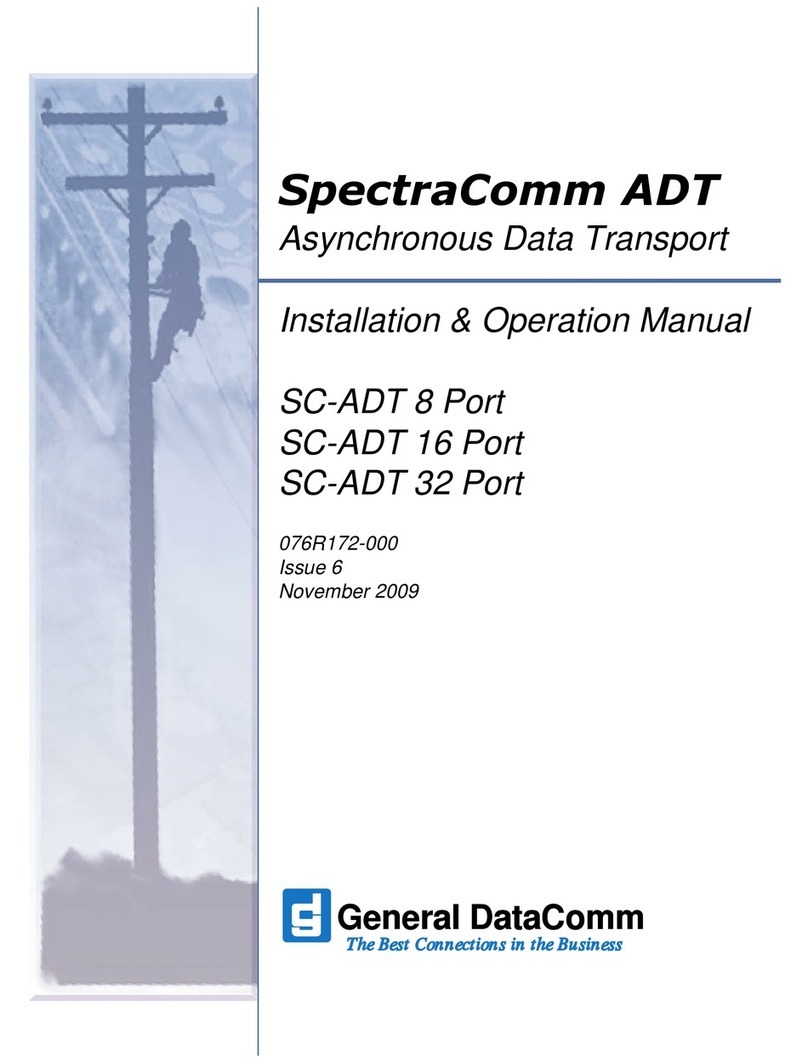
General DataComm
General DataComm SC-ADT 8 Port User manual
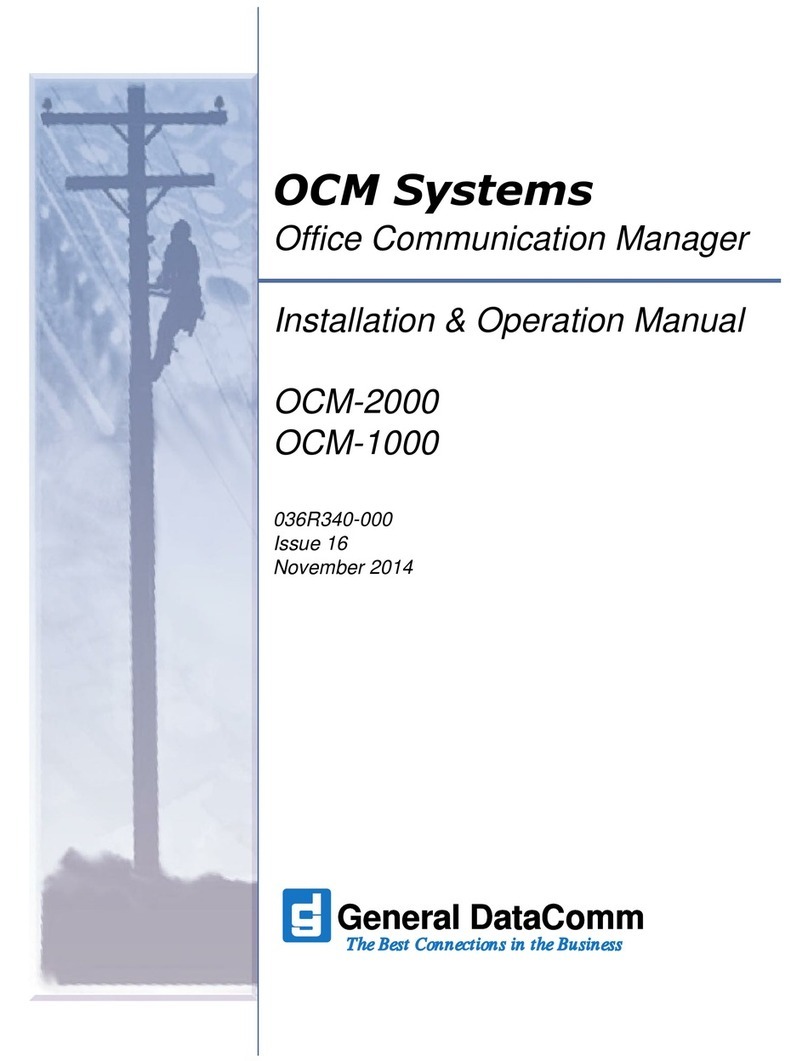
General DataComm
General DataComm OCM-2000 User manual
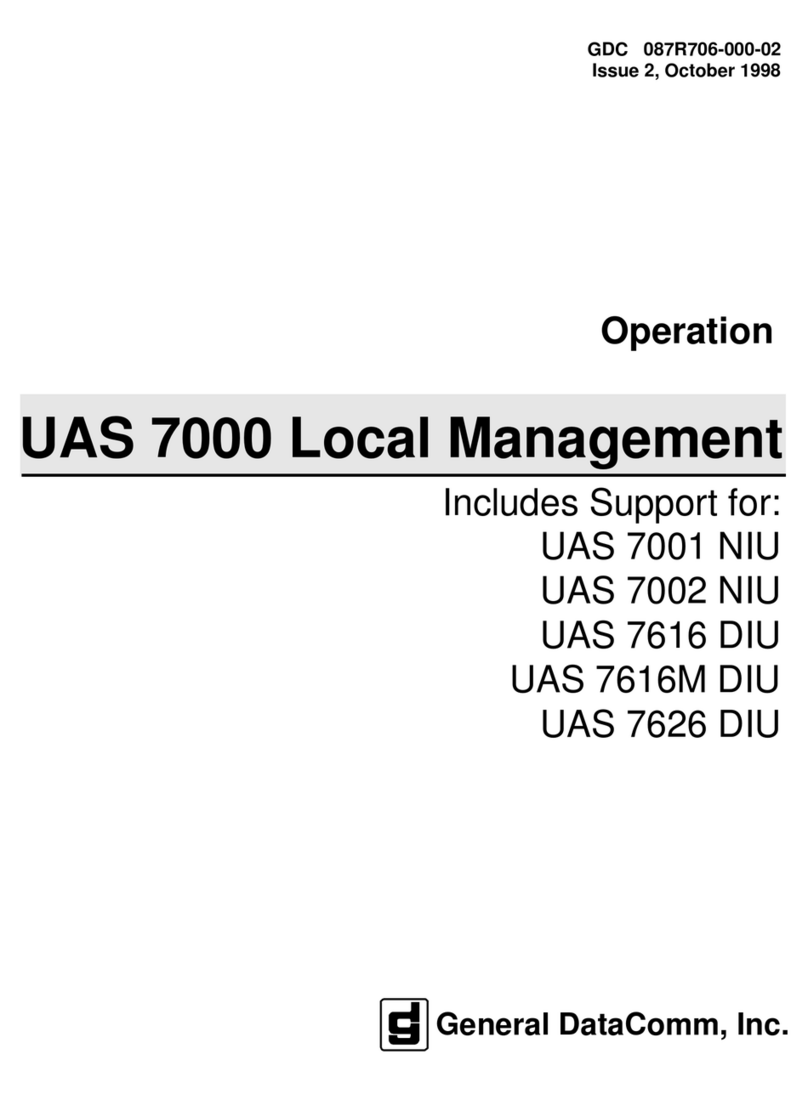
General DataComm
General DataComm UAS 7000 Instruction Manual

General DataComm
General DataComm SpectraComm SDT User manual

General DataComm
General DataComm SpectraComm 553 Owner's manual
